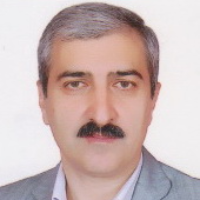Assessing the level of vulnerability of urban areas against earthquake crisis using weighted overlay technique and RADIUS model (case study: Ardabil city)
Earthquake is considered as one of the most catastrophic and destructive types of natural hazards that cause extensive damage to property and assets, especially in urban areas, and cause many human casualties by destroying buildings and urban infrastructure. Therefore, the first and most basic step in crisis management in order to reduce the effects of an earthquake is to identify vulnerable levels against this crisis. In this regard, the present research was written with the aim of evaluating the level of vulnerability of Ardabil city against the earthquake crisis. The research method in the present study is mixed (quantitative and qualitative) with practical purpose and analytical and exploratory nature. The statistical population of the research also included managers and elites of Ardabil city, and the sample size was determined through the Delphi method of 20 experts. Also, in line with information analysis, have been used AHP technique in Expert Choice software, Weighted Overlay method in GIS software, and RADIUS damage estimation model. The findings of the research show that by examining 15 criteria, the criteria of distance from the fault, proximity to hazardous uses and access to service centers have the most importance (influence) to assess vulnerability to earthquakes. Also, according to the evaluation of the examined criteria and its integration in the fuzzy overlay method, it was found that about 13% of the tissue of Ardabil city is in the zone of very high vulnerability and about 18% is in the zone of high vulnerability. On the other hand, the results of the RADIUS model show that 13853 buildings are subject to destruction, 36% of them are in region 1 and 29% of them are in region 4. Also, the number of injured in the possible earthquake is estimated to be 67117 and the number of dead is 3113.
-
Identifying and prioritizing urban management strategies in order to recreate the Urban decay of the central area of Rasht city
Parisa Khoshpasand, *, Hossein Asghari, Sedigheh Hassanimehr
Journal of Geographical Engineering of Territory, Winter 2025 -
The role of free zones in rural development, challenges and strategies with emphasis on the role of Anzali free zone
Babak Alidoste Masouleh, Hossein Asghari *, Sedigheh Hassanimehr,
Journal of Geographical Engineering of Territory,



